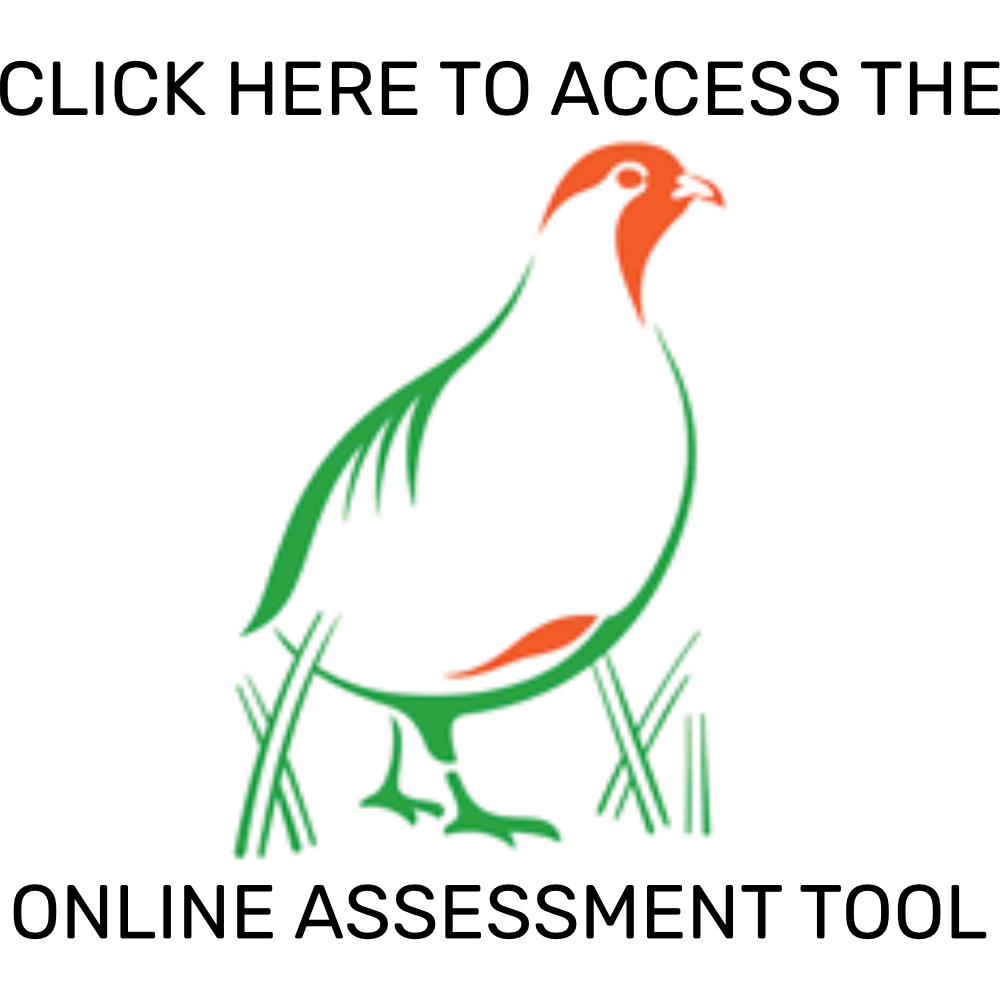GWCT Shoot Biodiversity Tool
Introduction
In partnership with PERDIX, the GWCT shoot biodiversity tool was developed to provide users with a quick and easy way of assessing key biodiversity indicators (woodland biodiversity, farmland birds, wild pollinators and ground nesting waders) on their shoots.
Features
- Quick & easy to use
- Secure and convenient
- Based on GWCT science
- Clear and actionable results
- Register multiple shoots
- Conduct and save unlimited assessments
- Printable certificate of results
How to use the shoot biodiversity tool
After logging into your account, click on My Shoots at the bottom of the page. You will then be asked to create your first shoot by clicking on CREATE SHOOT.
Register your shoot by entering its name and approximate location from the drop down list. Location is an optional field. Click Save at the bottom of the page. This shoot will now appear in your My Shoots list. Additional shoots can be created by clicking + sign in the top right corner.
To conduct a biodiversity assessment for a shoot, click on the relevant shoot tile. In the next page, click on the + sign in the top tight corner. An assessment form will then appear on the page. Once you have completed the assessment, click Save at the bottom of the page. Multiple assessments for the same shoot can be created and saved.
Scoring System
Once you have completed your assessment, you will be given a score for each biodiversity indicator at the top of the form. The scores are based on a simple traffic light system and are as follows:
- Green ++ Shoot is likely delivering significant biodiversity net gain in this biodiversity indicator.
- Green + Shoot is likely delivering a biodiversity net gain in this biodiversity indicator, but with potential to deliver even more.
- Amber = No indication that game management activities are having a positive or negative impact on biodiversity in this biodiversity indicator.
- Red - Potential negative impact - Seek further information to find out why a red indicator has been calculated. Work may need to be undertaken over the next 12 months to ensure game management activities do not have a negative impact on this biodiversity indicator.
- Red - - Likely negative impact - Seek advice to understand why a negative biodiversity indicator has been calculated. Adjustments to management will likely be required to ensure game management activities do not impact on biodiversity.
Press Release
A new free online tool that has been launched by the Game & Wildlife Conservation Trust (GWCT) could help shoots of all sizes better understand their impact on biodiversity and make improvements to boost wildlife and habitats.
The GWCT’s biodiversity advisors already work with shoots across the country on ‘shoot biodiversity assessments’ but, says Dr Roger Draycott, GWCT Director of Advisory and Education:
“We wanted to help shoots to evaluate their contribution to biodiversity by creating a simple online tool, free and accessible to all, to encourage sector-wide change.
“Any shoot can use the tool to better understand the effect they are having on the land they shoot over and consider new ways in which they could make a positive contribution to biodiversity by tweaking some of their management.”
The online assessment tool will ask a series of qualitative and quantitative questions around different aspects of game management, such as release densities, areas of release pen, area of woodland and different types of game cover, and questions about predation and pest control, and feeding regime. The resulting output will indicate the contribution to biodiversity conservation in different areas of game management on the user’s individual shoot.
The assessment is designed around parameters based on GWCT research, including sustainable releasing guidelines and grey partridge sustainable harvest guidelines, and a shoot’s contribution to the conservation of farmland birds and wild pollinators will be measured by benchmarking against the Countryside Stewardship Farmland Wildlife and Wild Pollinator package ‘ask’.
Participating shoots will receive a ‘traffic light’ report highlighting the shoot’s contribution to biodiversity conservation in different areas. A shoot which is ‘green’ in all categories is delivering on all fronts. Other shoots may be ‘red’ in some areas but amber or green in others. Shoots which receive amber or red indicators in some categories will be signposted to measures they can take to improve, such as training courses, further information or a visit by a GWCT advisor.
“Our aim is to get all shoots, small and large, to better understand how their management measures affect the wildlife on their land,” continued Roger. “Where the assessment tool identifies negative impacts, we can advise and support shoot managers in making improvements, and help them recognise opportunities where the shoot could benefit species or habitat conservation by tweaking some management.”
The tool was developed in collaboration with Perdix Wildlife Supplies. Dr Dave Butler, Director of Perdix commented: “Shoots have the potential to provide considerable benefits to wildlife within our landscapes. Now, with the help of this innovative assessment tool, users will be able to quickly and easily assess the environmental performance of their shoot and, where necessary, make changes to current practices to further increase biodiversity gain. We are pleased to add the GWCT Shoot Biodiversity Assessment tool to our PerdixPro platform where we are continually increasing the availability of digital tools for land and wildlife managers.”


